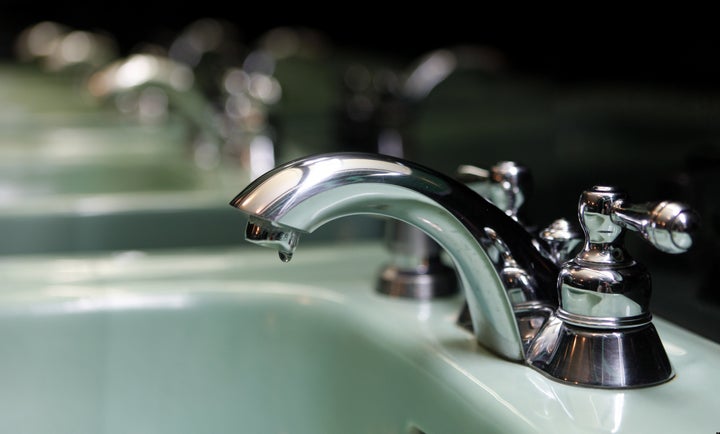
As a native Bostonian now living in New York, I became a little obsessed with the May 1 break in a massive water pipeline that serves many of the communities surrounding my old home . I called my family for important updates -- Are you boiling your water? Are any coffee shops still open? -- and rued the incredibly poor timing of a just days-old ban on the sale of bottled water in a suburban Boston town.
But as the emergency wore on, I thought that, as inconvenient as the break was, the nearly two million people affected by it all knew that the annoyances were temporary. Drinking water was still relatively plentiful in Massachusetts and a little bit of engineering would repair the pipeline and bring life back to normal in a matter of days.
Meanwhile, in less water-blessed parts of the United States, some people are hoping that a lot of engineering can keep life-altering water shortages at bay.
Enter desalination, or the process of removing salt from water to create a seemingly endless supply of drinking water.
There's no question that the idea of a drought-proof supply of drinking water is a tantalizing one, especially in water-challenged areas. But, as most of us learn pretty early in life, nothing comes for free.
The process of converting salt water to drinking water is highly energy-intensive. In San Diego it takes eight times more electricity to produce about 325,000 gallons of water through desalination than it takes to pump the same amount of groundwater. Because desalinated water is so energy-dependent, water customers are vulnerable to rises in energy costs.
This is where desalination stumbles its way into the "energy-water nexus." In short, generating electricity requires a lot of water, while treating and moving water requires a lot of electricity. Desalination does not help to ease the burden of these interconnected demands, in fact it makes the situation worse.
Consider the added demand from a new desalination plant on the electric grid -- a grid fed by power plants that also require a tremendous amount of water for cooling. In other words, we're creating drinking water for one water-starved location using massive amounts of electricity generated with massive amounts of water somewhere else. Such a scenario raises an obvious question -- Does this make good sense?
Another problem is that desalinated water can bring contaminants from its source into the drinking water, through a desalination plant's treatment processes and through the distribution of the water. Such contaminants, like chlorine, boron and bromides, will ultimately require more regulatory oversight and, potentially, more energy-intensive treatment to make the water safe.
Desalination also damages coastal ecosystems. The Surfrider Foundation recently filed a lawsuit against the San Diego Regional Water Quality Control Board, challenging a permit that gives the backers of a planned desalination facility the green light to withdraw 300 million gallons of seawater a day. As the plant withdraws water, it would also suck in and destroy millions of fish eggs and other forms of marine life every year.
So what's the better option? Conservation and infrastructure upgrades. I know, I know -- boring. Where's the cool new technology? Where's the new industrial facility that seems to shout out "The solution is here!"?
But what water conservation programs may lack in glamor, they make up for in long-term cost savings, safety and reliability. The Pacific Institute found that California could save fully one-third of its water use through conservation programs, and 85 percent of this water could be saved at costs lower than the cost of tapping into new sources.
As the Pacific Institute analysts wisely concluded: Is desalination the ultimate solution to our water problems? No. Is it likely to be a piece of our water management puzzle? Yes. There are 40 desalination projects at various stages of development throughout the United States, and just a handful of large-scale, currently operating plants -- some with a checkered history - so the desalination discussion is just beginning.
In certain locations, more advanced desalination technologies powered by their own renewable energy source could be a tremendous asset. But, for most of the country, we'd get a far greater bang for the buck, and far less damage to the environment, by conserving and reusing water and repairing those leaky pipes.
Originally published at Ecocentric.